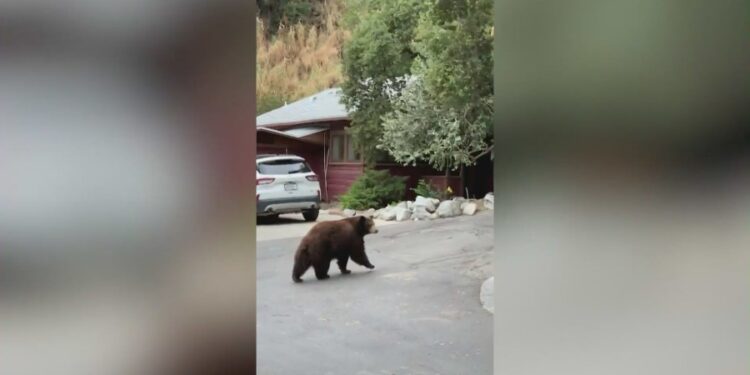A Sierra Madre resident returned home to a shocking surprise after discovering a bear had broken in while searching for food.
The bruin left behind a trail of destruction inside, knocking over furniture, objects and any food it could get its paws on.
The homeowner, Anne, said the bear had crawled through a side window to gain access to the home on Sunday, Sept. 15.
“The bear ripped open the window and took off the screen, climbed inside and moved around the kitchen looking for things,” she said.
This break-in comes just a few months after a bear broke into a home located directly across the street from Anne’s on Sunnyside Lane.
“It’s a little unsettling,” said Mickey Canterbury, a Sierra Madre resident. “Some of them are really big. Just realizing it’s a large creature can be a little intimidating.”
Although some feel nervous about the animals, many residents said seeing bears on their streets or in their backyards is a natural part of canyon living and that the bears wandering around did not display any signs of aggression.
Wildlife officials always recommend being prepared in case of animal encounters. The National Park Service offers these tips to stay safe when spotting a bear:
- Identify yourself by talking calmly so the bear knows you are a human and not a prey animal. Remain still; stand your ground but slowly wave your arms. Help the bear recognize you as a human. It may come closer or stand on its hind legs to get a better look or smell. A standing bear is usually curious, not threatening.
- Stay calm and remember that most bears do not want to attack you; they usually just want to be left alone. Bears may bluff their way out of an encounter by charging and then turning away at the last second. Bears may also react defensively by woofing, yawning, salivating, growling, snapping their jaws, and laying their ears back.
- Continue to talk to the bear in low tones; this will help you stay calmer, and it won’t be threatening to the bear. A scream or sudden movement may trigger an attack. Never imitate bear sounds or make a high-pitched squeal.
- Pick up small children immediately. Do not make any loud noises or screams—the bear may think it’s the sound of a prey animal. Slowly wave your arms above your head and tell the bear to back off. Do NOT run or make any sudden movements. Do not make any loud noises or screams—the bear may think it’s the sound of a prey animal.
- Make yourselves look as large as possible (for example, move to higher ground).
- If the bear is stationary, move away slowly and sideways; this allows you to keep an eye on the bear and avoid tripping. Moving sideways is also non-threatening to bears.












